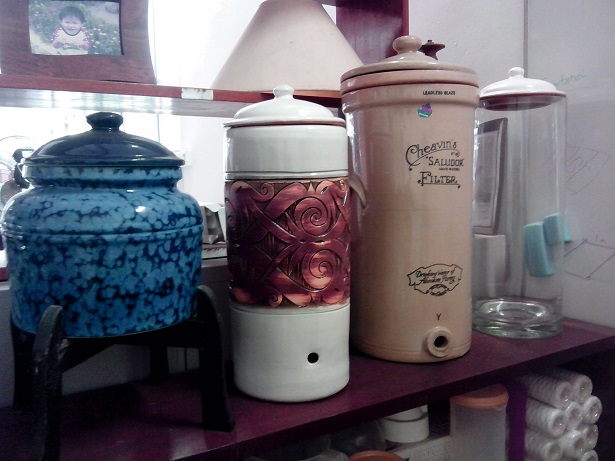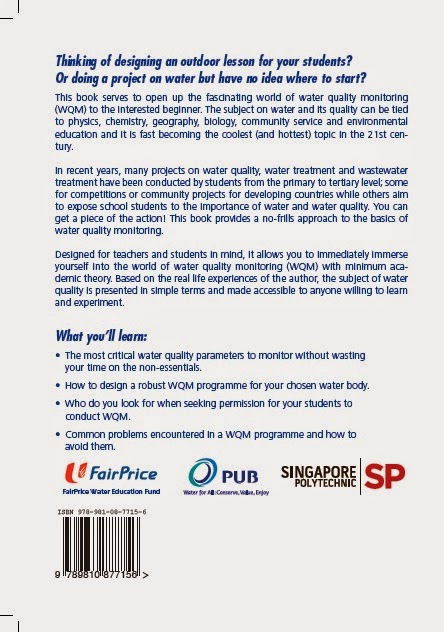Facing a cascade of news about the situation in Haiti after a magnitude 7 earthquake, I can't help but compare Haiti with Singapore. (I know this sounds off topic but don't worry, I will get to the water part soon.)
First, a summary of the aftermath in Haiti:
- 100000 - 200000 people died (the number varies, depending on the news source)
- Survivors are in dire straits - severe lack of food, water and shelter.
- The various institutions (government, law enforcement, health care etc.) are seriously crippled.
- Looting is rampant in the capital.
Some recent news of Haiti:
HAITI:
Agencies rush to get water to earthquake disaster zone (19/01/10)
Haiti's Environment Needs Long-Term Help: Experts
Most of us would immediately sympathise with the Haitians. But if asked whether the same thing can happen in Singapore, most of us will instinctively shake off such a possibility.
Here is an
informative post discussing the possbility of an earthquake here. Naturally, there is no definite answer since earthquake prediction is not an exact science though our odds of not having an earthquake seem pretty good.
However, I remember reading a book in my childhood about an earthquake recorded in Singapore in Feb 1861. The interesting part is not the earthquake but the rain of frogs and fishes that preceded the earthquake. See:
- It's raining frogs and fish
- Frogs rain
- Weird, weird rain
However, there was no mention of casulties, magnitude of quake or damage level. I presume that was linked to the quake in
Sumatra at that time.
My point is: Singapore's history is so short that we won't know if there ever was a killer quake in the past while we assume we are safe.
Anyway, it does not take an earthquake to disrupt civilised society. You can choose from any of the following crises (some more probable than others):
- Terrorist attack
- Tsunami
- Nuclear power plant accident
- Indonesia - a, b (is Indonesia still building its nuclear plant in Java?)
- Malaysia
- Singapore
- Social unrest
- Economic collapse
- Pandemic (H1N1, H5N1, Sars etc.)
- 20 December 2012 (this will be hard to survive)
Back to water...
It is said that you can only live 3 days without water yet how many of us actually pause to ponder about how the water reaches our taps and where to get water if our taps run dry? From Haiti's experience, water is clearly a top priority commodity once the normal channels of water supply are disrupted. Yes, I am sure people will kill to obtain this precious fluid.
Check out the following sites on handling a crisis/ emergency in Singapore.
Singapore Government Crisis News Website
Water distribution (under purview of SCDF)
Stockpiling of essential household items (SCDF)
We are encouraged to stockpile food, candles, first aid items, torches, radios but water is glaringly missing from the list. (Do not be mistaken. The above items are critical too.) Instead, in an emergency, water is to be collected at distribution points served presumably by water tankers. How reliable is this? If 10% of the population is incapacitated, will the water tankers still run? What about 50% of the population being incapacitated?
It is my belief that each family should stockpile some water. How much? This is trickier to answer. A good estimate is to have 8 litres per person per day to survive
comfortably. Depending on the severity of the crisis, you may need to store enough water for 3 days to 3 years but I feel 3 days should be the bare minimum.
(Updated by author on 6/4/17: I smiled inwardly to myself when I reread this estimate of 8L per person per day because I was reinforced with the Sphere standards in the Sphere Handbook the past few weeks. For those unfamiliar with Sphere, "The Sphere Handbook is one of the most widely known and internationally recognized sets of common principles and universal minimum standards for the delivery of quality humanitarian response." Anyway, it suggested a minimum requirement of 15L/day/pax! Remember, this figure applies to refugees from manmade and natural disasters. But bear in mind that it includes washing, bathing (the minimalistic kind), cooking in addition to drinking. Therefore, if we were to talk an emergency in the first few days, 8L can pull you through (in a way) but longer than that, we are going to face big problems.
(Further update by author on 30/8/17:
Actually, the "minimum" requirement of 15L/day/pax is at the upper limit of a range of 7.5-15L/d/c, depending on several factors. See below for a breakdown.)

Alternatively, your water supply may still operate but because of disruption to the water treatment process due to the crisis, the water quality of water from your tap is less than ideal. (In fact, some people already believe this to be so currently, which explains the popularity of water filtration/ purification devices.) Do you have the ability to filter/ purify your water? If you are lucky to have a water filter/ purifier, does it need electricity (which may not be available) to work? If you boil your water, is gas or electricity available?
Figure: My favourite Katadyn Mini - mostly for use outdoors. It can remove particulates and most bugs but not heavy metals, pesticides. However, because it is so light and small, I won't mind bringing it along whenever I head outdoors so when I really need it, it will be there. (Batteries are of course not needed.)
A final question to keep you thinking critically - if there is no water supply, your toilet flush is not going to work. What are you going to do with the loads of bodily waste from your family - both liquid and solid. Talk about solving a filthy problem.
I hope that at the very least, this post will start you thinking about the many things we take for granted in civilised society and how fragile many of society's support services are. And if you go ahead to do something about these, all the better.
 Figure: Tributary into Sungei Pandan. This is a good example of a canal that looks like a natural stream.
Figure: Tributary into Sungei Pandan. This is a good example of a canal that looks like a natural stream.


















